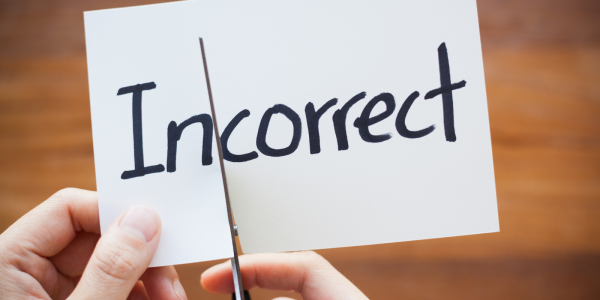Newly self-employed – is your National Insurance position correct?
If you started your own self-employed business during the Coronavirus pandemic and did not have a National Insurance number (NINO) then you may not be properly registered for Class 2 National Insurance contributions (NIC).
This article explains who may be affected and why, what this means for your NIC and what you need to do now to make sure your NIC payments are correct and up to date.

What is the potential problem?
This issue affects people who started self-employment and did not have a NINO.
Due to the Coronavirus pandemic, the usual process for obtaining a NINO was suspended as it was not possible to have face-to-face interviews. Because of this, you had to register your self-employment with HMRC using the form SA1 rather than form CWF1 as the form SA1 does not ask for a NINO.
Unfortunately, the SA1 form only registers you for Self Assessment (the process where you complete a tax return and calculate what tax you owe) rather than specifically self-employment. This means HMRC will not know you are self-employed for National Insurance purposes and so will not be expecting you to pay Class 2 NIC when you complete your 2020/21 tax return.
Why do I need to make sure my Class 2 NIC is correct?
The self-employed pay two types of NIC, Class 2 and Class 4. Our website guidance explains more about these types of NIC and how these are calculated as they depend on what profits you make from your self-employment.
It is the Class 2 contributions which build up your entitlement to certain state benefits such as maternity allowance and the state pension, so it is important that you pay your Class 2 NIC on time if you want to continue to add qualifying years to your NIC record. This is the case even if you do not have to pay Class 2 NIC due to low self-employed profits but want to do so voluntarily.
I haven’t paid any Class 2 NIC – what should I do?
Usually, you pay Class 2 NIC as part of the Self Assessment tax return process and it is due by 31 January after the end of the tax year. If you started self-employment between 6 April 2020 and 5 April 2021 your first Self Assessment tax return will be required for the 2020/21 tax year. However, because HMRC will not have registered you as self-employed your Class 2 NIC will not be calculated as part of your 2020/21 tax bill.
If this is the case, you should call HMRC’s National Insurance helpline and explain that you registered for self-employment using form SA1 rather than form CWF1 and you need to check your Class 2 NIC position is correct. HMRC should calculate your payment – Class 2 NIC is £3.05 each week you traded if you earned profits above the small profits threshold of £6,475 (for 2020/21). For example, if you traded for six months in the 2020/21 tax year and made profits of £8,000 your Class 2 NIC is calculated as 26 weeks x £3.05, which is £79.30.
Where can I find more information about registering for self-employment and NIC?
There is guidance on our website on registering your self-employment for tax and NIC and on NIC for the self-employed.
Additionally, you may find it helpful to read our self-employment guide which explains in more detail your tax responsibilities and how to prepare your accounts and complete your Self Assessment tax return.
